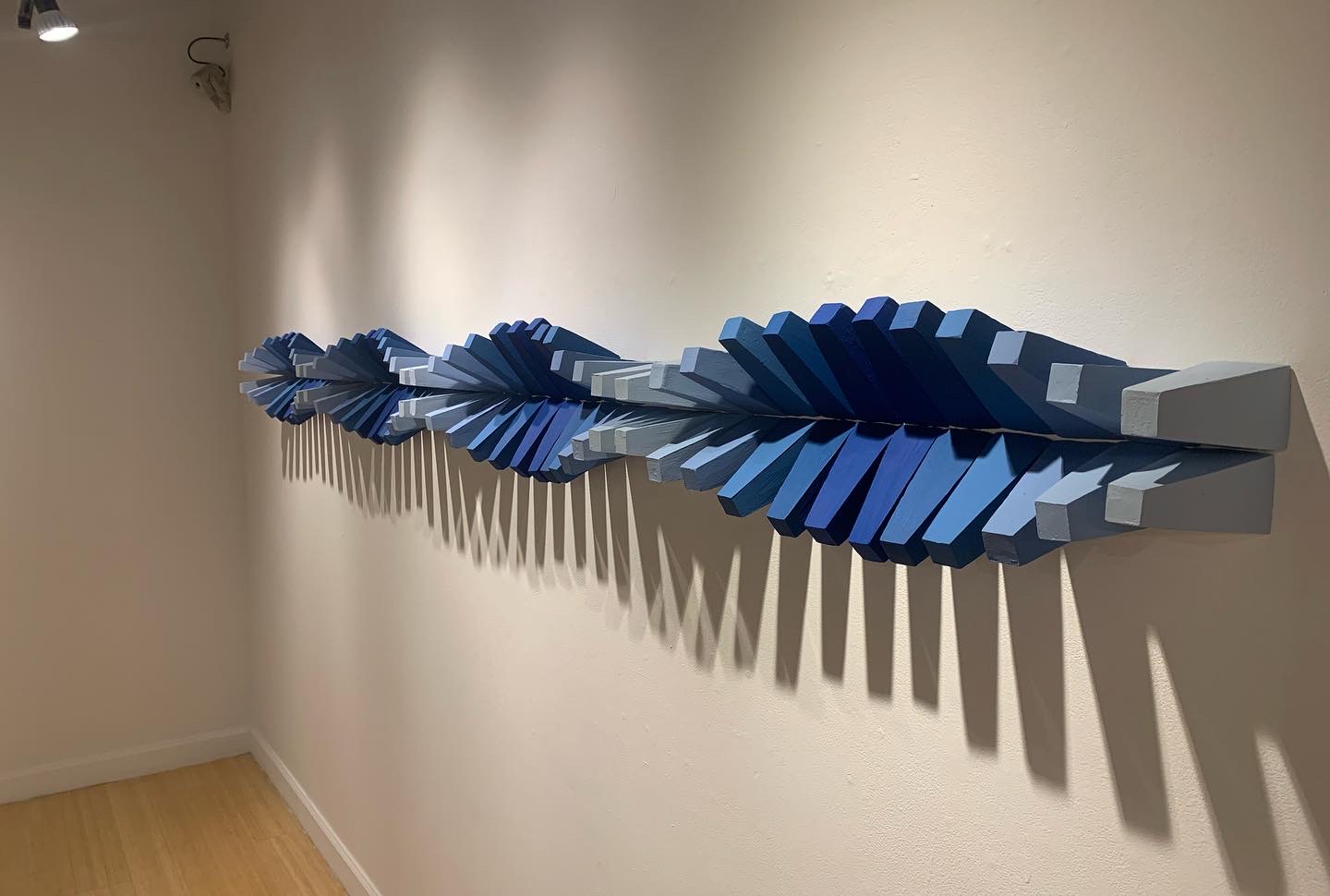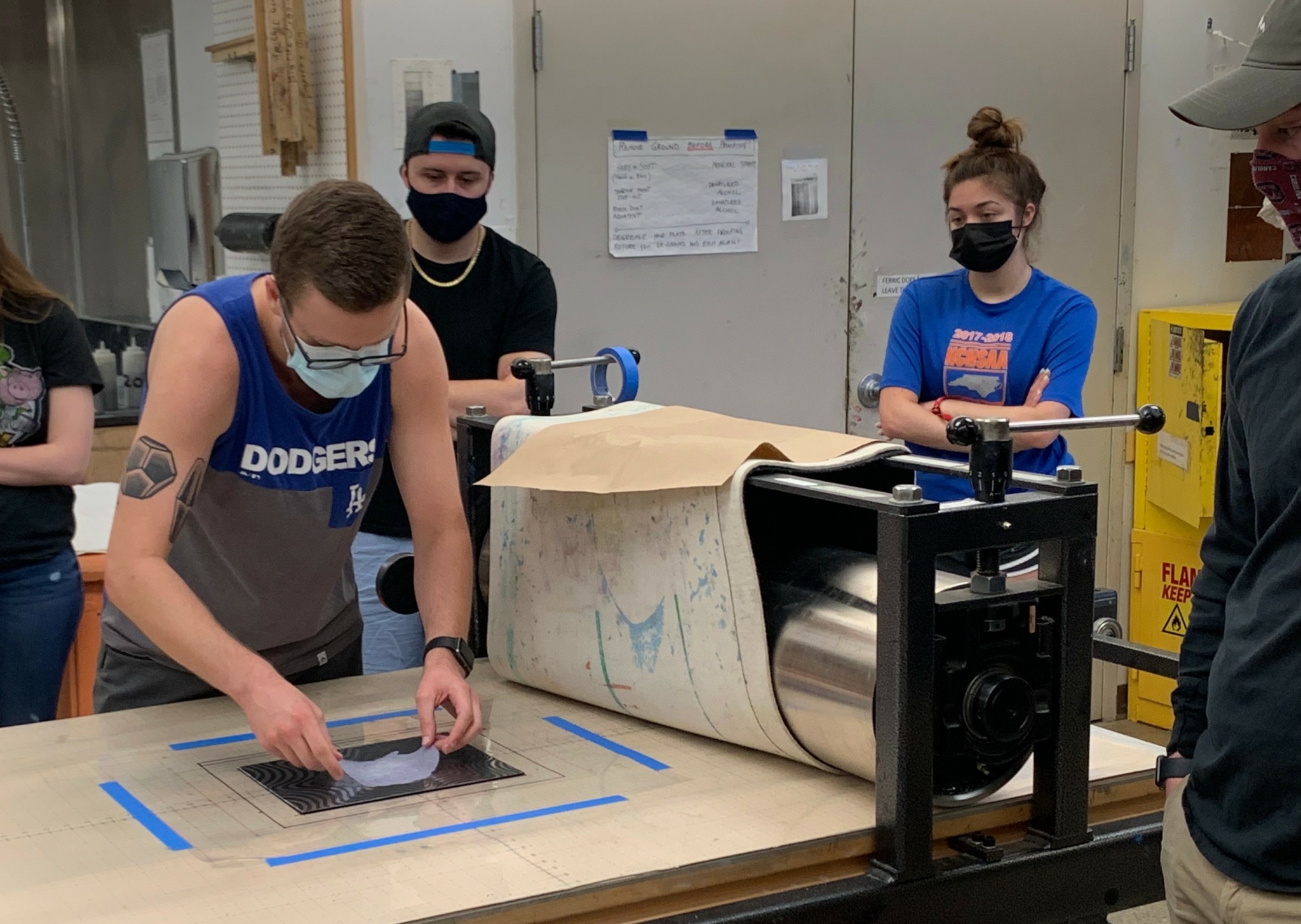We’re excited to introduce you to the always interesting and insightful Nick Brutto. We hope you’ll enjoy our conversation with Nick below.
Hi Nick, thanks for joining us today. Do you feel you or your work has ever been misunderstood or mischaracterized? If so, tell us the story and how/why it happened and if there are any interesting learnings or insights you took from the experience?
Art is one subject that is up for interpretation most of the time regardless of the intentions of the artist. Thus the conundrum of you and your work being misunderstood is ever present in the art community. In my own case, there have been instances in which I have had people characterize my work as derivative and one dimensional for utilizing repeated geometric shapes regardless of their meaning. In most cases this was due to someone’s first impression rather than a viewer who has read a statement about the work and worked to understand the intent. The main takeaway for me in instances like this is that you can try as hard as possible to convey a meaning and the viewer will still create their own meaning. The important thing is to create work that you believe in because you are the only person who can create your work.

Awesome – so before we get into the rest of our questions, can you briefly introduce yourself to our readers.
My name is Nick Brutto and I am an artist and educator based out of Columbia, South Carolina. Growing up I was not interested in the arts or other activities that called for engaging my creativity but rather in sports and extracurriculars. I had a few art courses that were required during my K-12 education but was not involved enough to really get a taste for what it meant to make things with your own two hands.
In college I was undeclared and unsure as to what I wanted to study but eventually made the decision to major in History with a focus in Southern History. Though there are a few avenues that can come from a history degree, my pursuit become one embedded in education which would become my minor. During my junior year I had a free elective and decided to fill it with a beginning ceramics course which would ultimately be the foundation for my future in the arts. After being given my first experience with clay, it felt natural to continue this pursuit and expression.
My work took on man made geometric structures based in the background of engineering that a lot of my family members were basing their careers in. After expanding on my work I applied to receive a Masters of Arts in Teaching Art Education. This program allowed me to expand my knowledge on research and pedagogy to learn how to become a better teacher rather than a better artist. After fulfilling this program, it felt as though I had barely scratched the surface on my knowledge the fine arts processes. Ultimately this lead to the pursuit of a Masters of Fine Arts that would allow me to educate at a higher level but also explore my own artistic process to a further degree.
My work began to take shape by being attached to people and how we are all bound together by both similarities and differences. It came to the point where I felt the three main attributes that we all share as humans are the mind, body, and the soul. Though we all share them, our experiences shape these attributes in a multitude of ways that become what we call our identity. That identity is unique to that individual but we all have parts and pieces that bind us to others. My hope is that addressing this work will inspire those who viewed it to lead life with empathy and attempt to see life from different perspectives other than their own.

For you, what’s the most rewarding aspect of being a creative?
The most rewarding aspect of being an artist is being able to connect with other artists. There is something special about being part of a collective and the energy that comes out of likeminded people creating in the same environment. It is a way for you to really flesh your work out into a new realm by getting feedback from others but also harnessing the motivation and drive by observing other artists in their element.

Are there any resources you wish you knew about earlier in your creative journey?
There is one book that I always come back to that really pushes me forward into my creativity which is Art and Fear by David Bayles and Ted Orland. This book delves into the fears of an artist in the world of exhibitions, social approval, and maintaining a steady flow of creating work. It examines the push and pull between being able to make the work you want to make and how you have to find meaning in the making of the work. In a realm where success is measured in resume lines and residencies, this notion of the work itself being the reward is a soothing concept.
Contact Info:
- Website: https://nickbrutto.com
- Instagram: @otturbkcin




